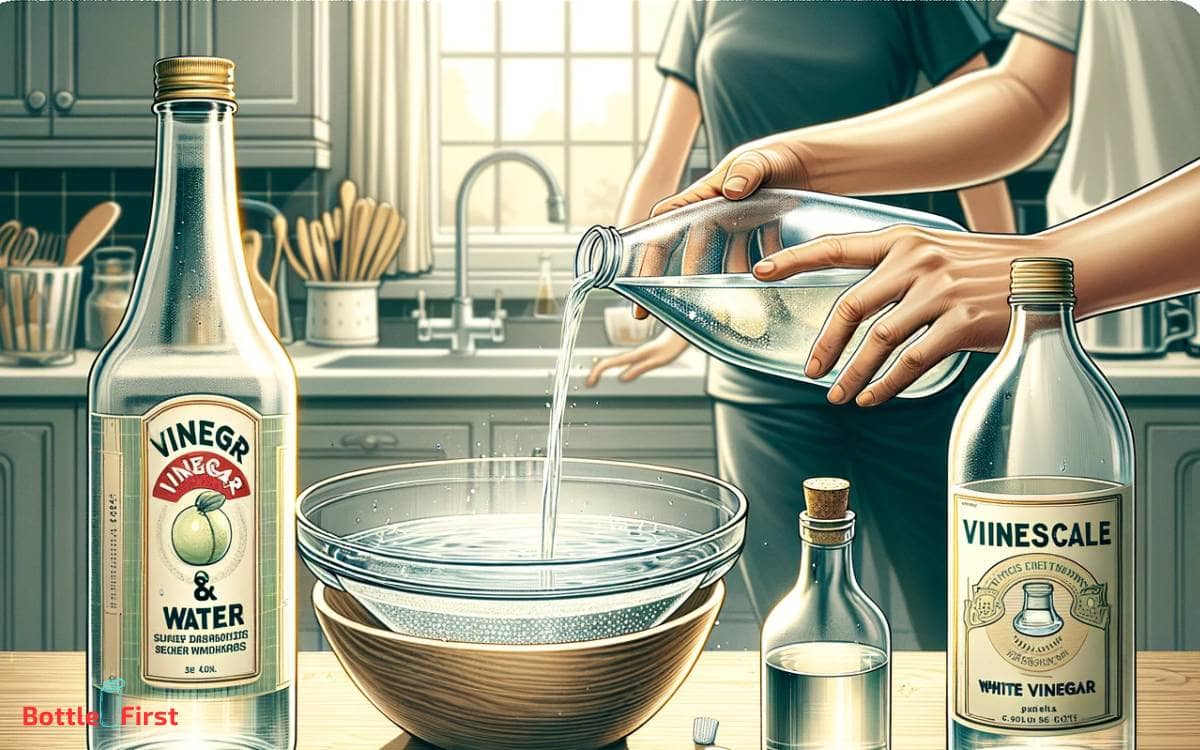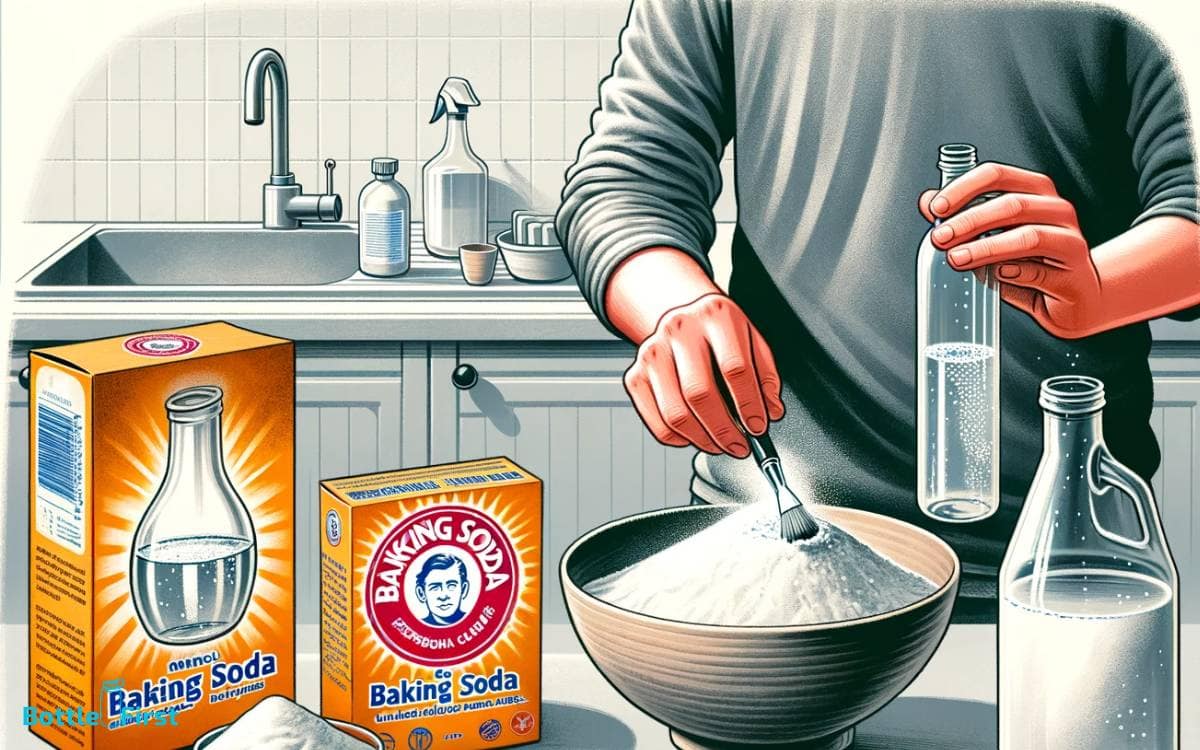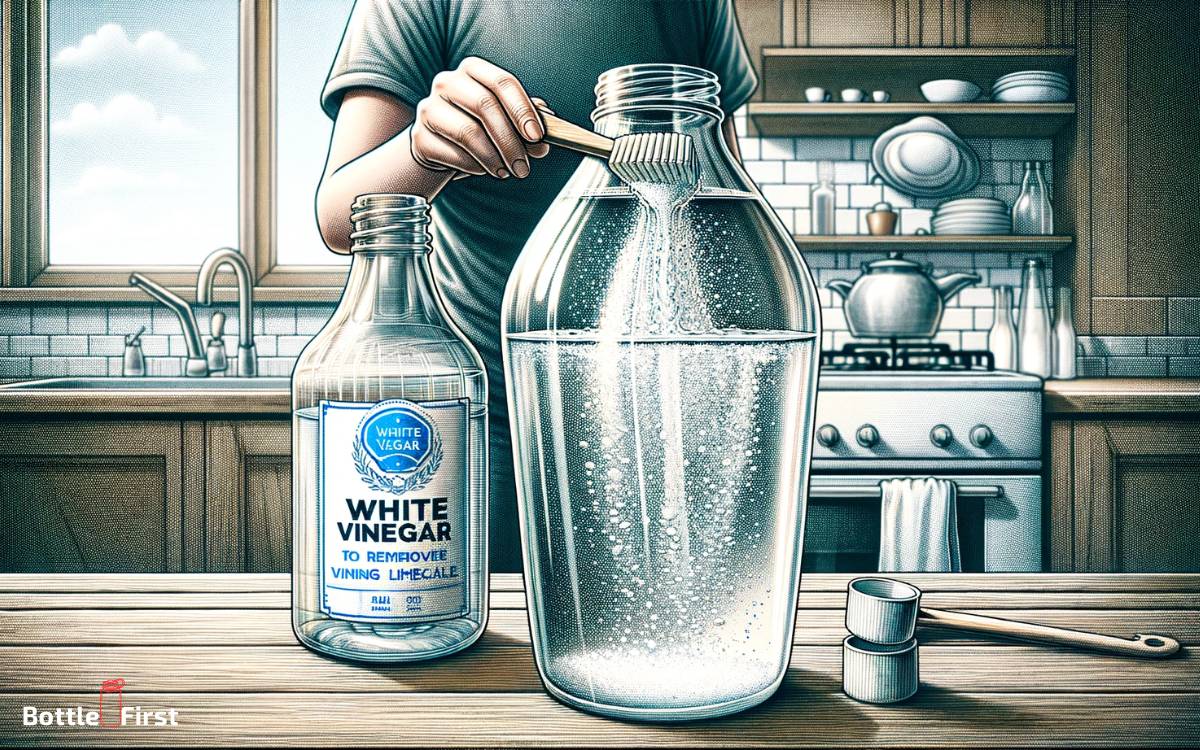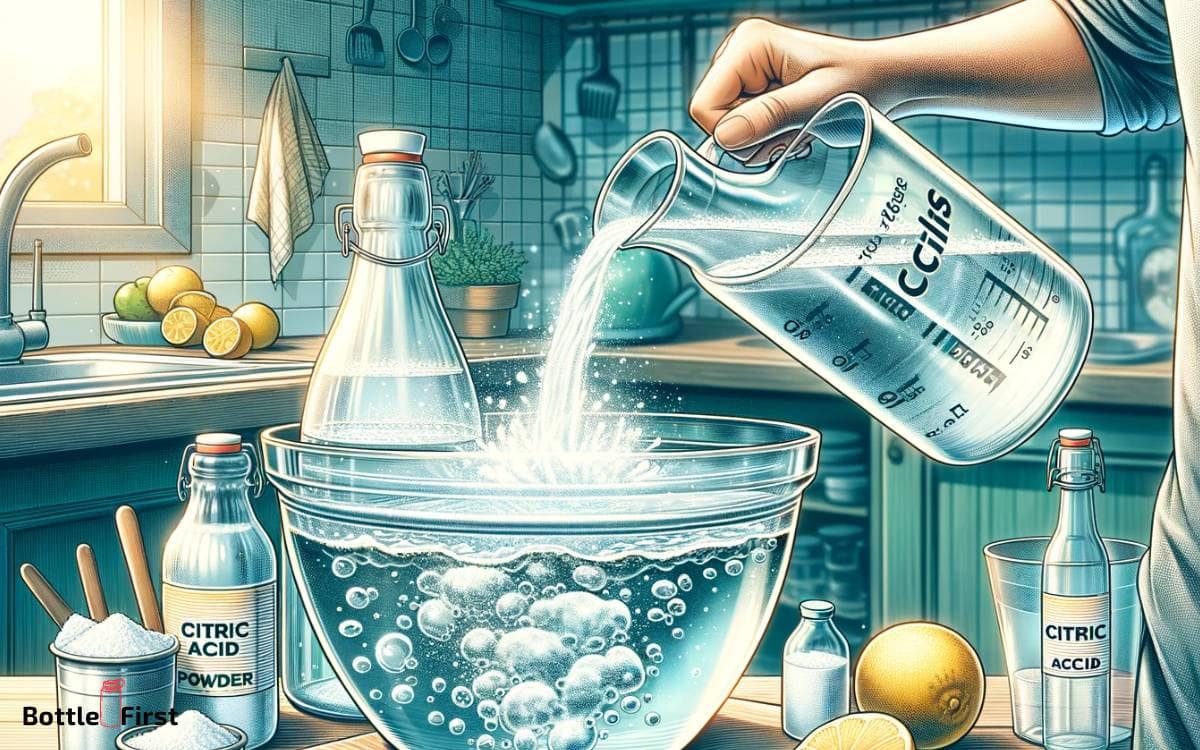How to Remove Limescale from Glass Bottles? 5 Easy Methods!
To effectively remove limescale from glass bottles, utilize natural acidic solutions like vinegar or lemon juice, or a gentle abrasive such as baking soda. These methods dissolve the calcium deposits without damaging the glass.
Limescale, a deposit of calcium carbonate, often builds up on glass surfaces when hard water evaporates.
Here are some quick methods:
Restore your glass bottles to a crystal-clear finish with these simple, eco-friendly cleaning solutions. Easily eliminate limescale from glass bottles using natural acids and mild abrasives.
Vinegar solutions, baking soda, and citric acid can efficiently dissolve calcium deposits, while lemon juice offers a fresh-smelling alternative. Follow these eco-friendly methods for a crystal-clear result.
Key Takeaway
Method 1: Vinegar and Water Solution
To remove limescale from glass bottles, start by creating a vinegar and water solution. Mix equal parts of white vinegar and water in the bottle, ensuring that there’s enough solution to cover all the affected areas.
Allow the solution to sit in the bottle for at least 30 minutes, or longer for stubborn limescale buildup.
Swirl the solution around a few times during this period to ensure all the limescale is being treated.
After soaking, use a bottle brush to scrub the inside of the bottle, paying extra attention to the areas with limescale deposits.
Rinse the bottle thoroughly with water to remove the vinegar solution and any loosened limescale.
This innovative method effectively tackles limescale, leaving your glass bottles clean and sparkling.
Method 2: Baking Soda Paste
You can create a baking soda paste by mixing baking soda with a small amount of water until it forms a thick, spreadable consistency. This paste is an effective and innovative way to remove limescale from glass bottles.
Here’s how to use it:
- Apply the baking soda paste to the affected areas of the glass bottle.
- Use a soft-bristled brush or cloth to gently scrub the paste into the limescale buildup.
- Let the paste sit on the limescale for about 15-30 minutes to allow it to break down the mineral deposits.
- Rinse the bottle thoroughly with water to remove the paste and limescale residue.
The baking soda paste provides a natural and efficient solution for tackling limescale, leaving your glass bottles sparkling clean.
Method 3: Lemon Juice Soak
Start by filling a container with equal parts of lemon juice and water. Submerge the limescale-covered glass bottle in the solution and let it soak for at least an hour, or overnight for tougher stains.
The citric acid in the lemon juice will help break down the limescale, making it easier to scrub off.
After soaking, use a bottle brush or sponge to scrub the inside of the bottle, ensuring you reach all the nooks and crannies. Rinse thoroughly with water and allow the bottle to air dry.
Here’s a table to compare different methods for removing limescale:
| Method | Ease of Use | Effectiveness | Cost |
|---|---|---|---|
| Lemon Juice Soak | Moderate | Good | Low |
| Baking Soda Paste | Easy | Good | Low |
| Vinegar Soak | Moderate | Excellent | Low |
Method 4: White Vinegar Soak
After the lemon juice soak, proceed with the white vinegar soak to further remove limescale from the glass bottle. The acidity of white vinegar makes it an effective natural cleaner for limescale.
Here’s how to do it:
- Fill the bottle with white vinegar: Pour enough white vinegar into the bottle to cover the limescale buildup.
- Soak the bottle: Let the bottle sit for at least 1-2 hours, allowing the vinegar to break down the limescale.
- Scrub the bottle: After soaking, use a bottle brush to scrub off the loosened limescale.
- Rinse thoroughly: Once the limescale is removed, rinse the bottle thoroughly with water to ensure all vinegar and limescale residue is gone.
The white vinegar soak offers a simple yet innovative solution for tackling limescale buildup in glass bottles.
Method 5: Citric Acid Solution
Proceed with the citric acid solution to further dissolve any remaining limescale residue from the glass bottle after the white vinegar soak. Citric acid is a powerful yet gentle solution that effectively tackles stubborn limescale deposits.
Create a solution by mixing one tablespoon of citric acid with one cup of warm water. Swirl the solution inside the bottle, ensuring it reaches all areas with limescale buildup.
Let it sit for about 30 minutes to allow the citric acid to work its magic. Afterward, give the bottle a thorough rinse with clean water.
The citric acid solution provides a cutting-edge approach to limescale removal, offering a safe and innovative method to restore your glass bottle to its pristine condition.
Conclusion
So there you have it, a few simple and effective ways to remove limescale from your glass bottles.
With just a few common household items like vinegar, baking soda, and lemon juice, you can easily restore your bottles to their sparkling, like-new condition.
Say goodbye to those cloudy, stained bottles and hello to crystal clear, pristine glass that’s ready for use!






